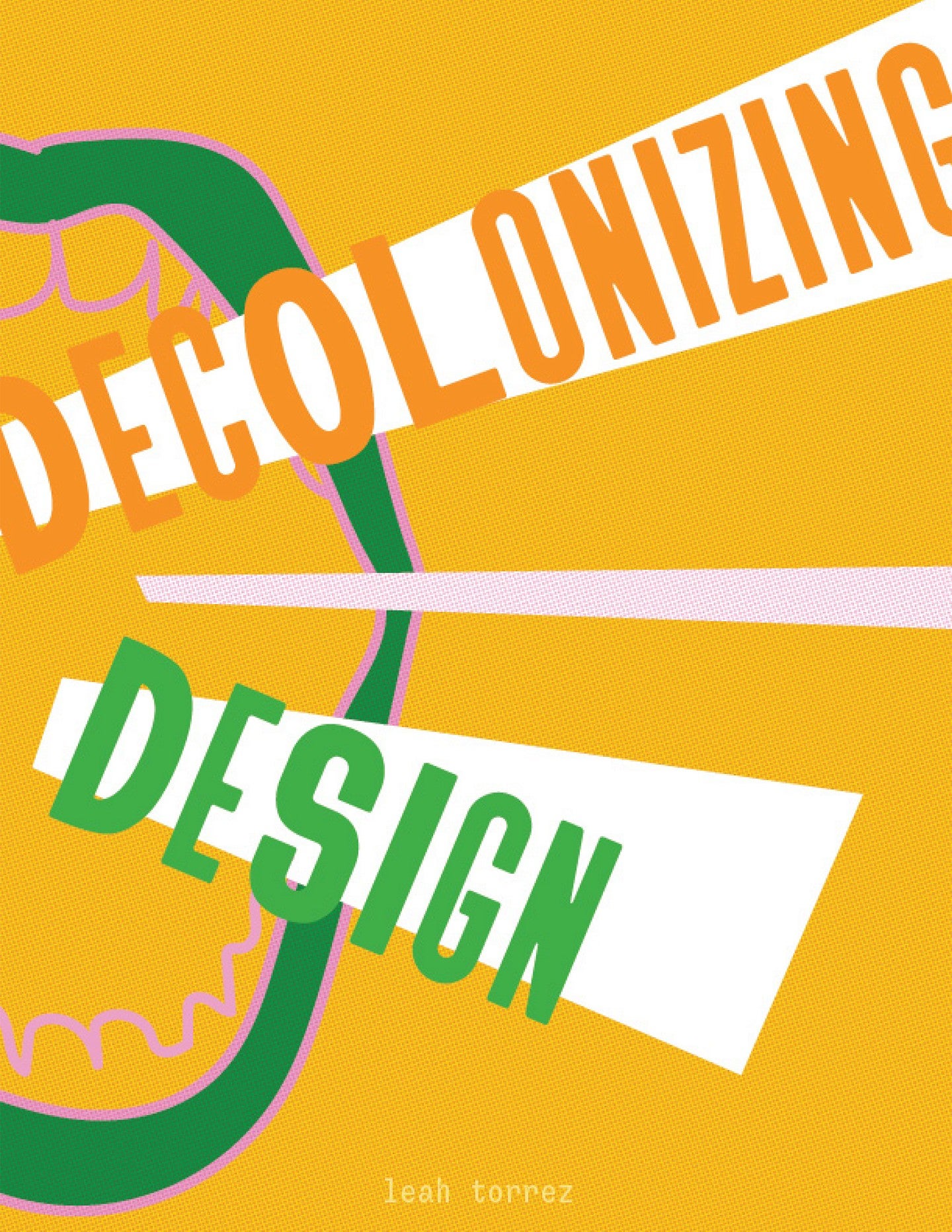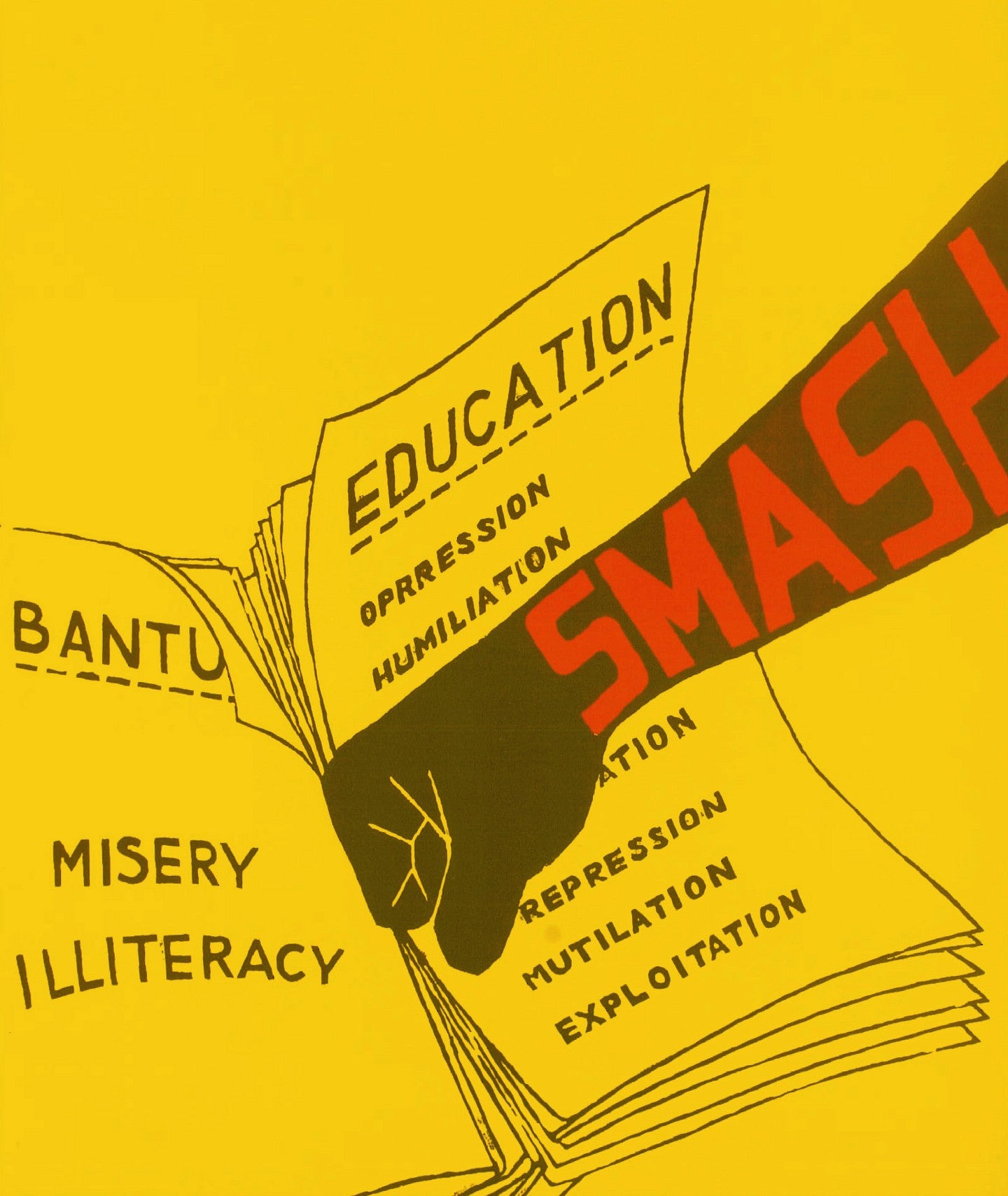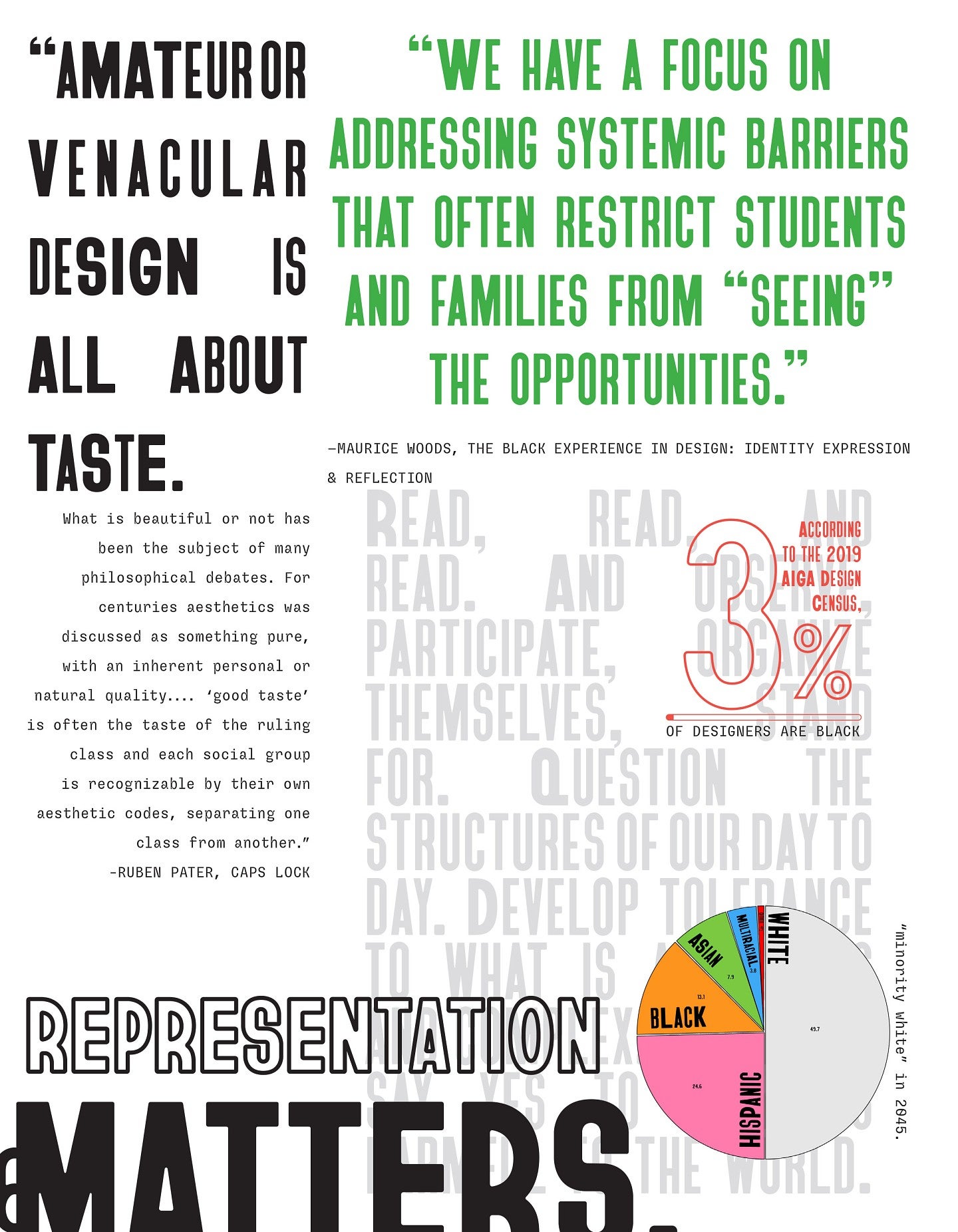
As a first-generation college student and a woman of color, Leah Torrez brought an uncommon angle to the field of design. As she immersed herself in coursework and began to understand the lay of the industry’s land, Torrez realized hers was a perspective not often shared by her contemporaries.
She learned that traditions in modern design typically descended from a Eurocentric aesthetic, and that standards like Helvetica typeface, left margins and predominant whitespace were rarely challenged.
As an advertising undergraduate, a confluence of experiences — including co-directing a student group for Black, Indigenous and People of Color (BIPOC), and designing the student-produced magazine FLUX — further expanded her horizons and inspired her to pursue a master’s degree in advertising and brand responsibility.
“At first glance, we often do not look at design and visuals as having a strong impact on certain audiences,” said Torrez, whose master’s capstone project “Decolonizing Design” aims to upend the status quo. “They tend to get lost in the noise of living. However, it is the opposite that is true. Design and visuals hold so much value to every culture.
“This program helped me complete this project by thinking deeper about my work and trained me to be able to continue to do so.”
In “Decolonizing Design,” Torrez makes the case that visual design and art direction can have “behavior-bending” impact on its audiences and occasionally break barriers where words cannot. When BIPOC designers are better represented in the industry — and appreciated historically — it enriches our societal tapestry and strengthens our collective storytelling power.


“One of the biggest takeaways from this project is how my role as a designer has a real impact in the world,” Torrez said. “The work becomes meaningful when I and other designers ask more questions. These questions change what inspires our work. The right question can also lead to an evolution of practices in design. What is considered good design and why it’s considered good is an ever-changing landscape. Why can’t we change it for the betterment of the world? When we welcome ideas that upset the standard, we start to push the ball in the right direction, a more purposeful direction.”
